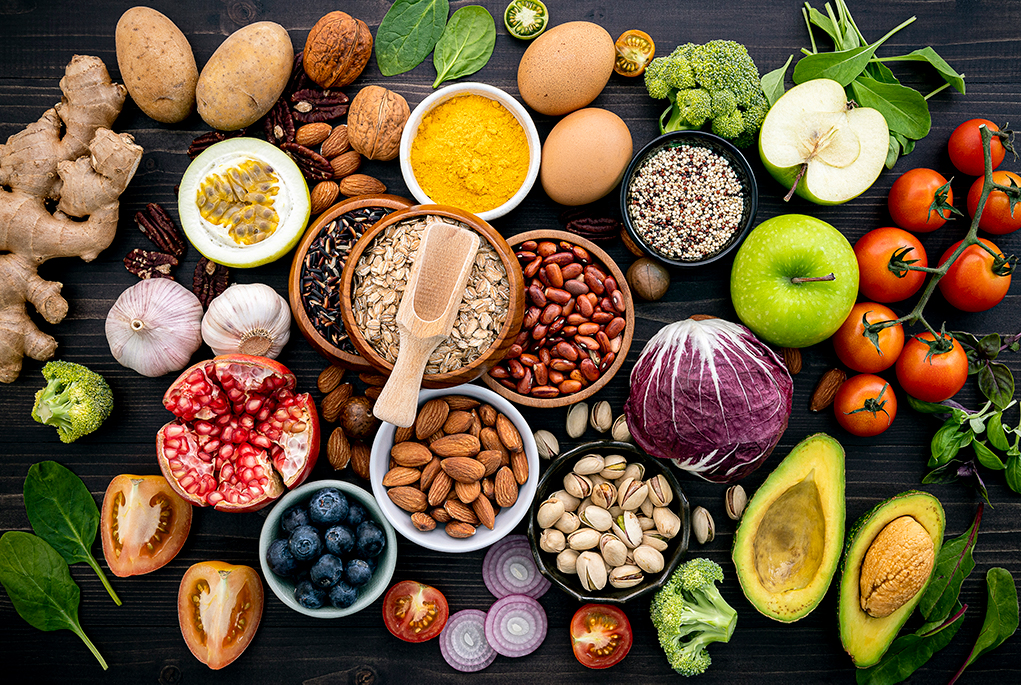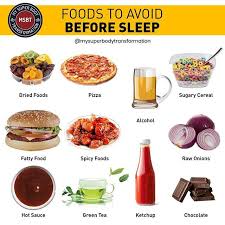
You can do many things in order to keep your diet full and healthy. However, you might not know that there are many healthy options. Calories don't have to be all that important, but they are an important part of the equation. More important than the calories is the nutritional content and ingredients. It is possible to make changes to your diet, such as replacing processed foods by whole grain alternatives. Here are some top options. You will be healthier if you eat more than one type of food.
Sugary snacks and drinks should be avoided. Added sugar and saturated fat are harmful for your health. Most store-bought muffins contain little more than a muffin shell. Don't eat "healthy" frozen dinners. They are packed with preservatives as well as sugar. Most desserts made without fat or gluten are low in nutrients. Many so-called healthy foods are high in artificial junk. Bananas and mangos, which are high in natural fiber, are great sources.
When choosing healthy foods, look for those with less fat, sugar,, and more. High amounts of these nutrients are considered to be unhealthy. It is better to avoid them than to overeat them. If you really want to indulge in a sweet treat, choose the healthier option. Organic and free-range are the best options. You should always consult a doctor if in doubt. It's simple to change to a healthier diet. It doesn't take much effort or research to make the switch to a healthier diet.

Aim for a variety of healthy foods in your diet. Get more fruits and vegetables in your diet. They are better for you over the long-term. Nutritious food is not necessarily calorie-dense. There are many ways that you can enjoy these healthy choices without feeling hungry. Finding a balance between healthy and unhealthy foods will ultimately help you lose weight and stay healthy.
Many fast-food outlets are trying hard to present themselves as health-conscious customers. However, they should not be confused with the term "healthy" printed on the packaging. Even "healthy" foods contain sugar substitutes that can actually increase caloric intake and increase the risk of diabetes. Healthy eating habits include avoiding unhealthy foods and sticking to whole foods. There are many things you can do to make your food more nutritious. It is as easy as making healthier choices.
Another common example of a fake healthy food is plant-based meats. They don't look like real meats. These foods are made to look just like real meat and contain high amounts sodium and fat. These foods are not good choices for your diet. These foods can be dangerous so you should only eat whole and nutrient-dense meals. It is crucial that you maintain a healthy balance of both unhealthy and healthy foods in your food intake.
For a natural alternative, choose raw or organic foods. Many of these foods are low-fat and rich in antioxidants. They're also rich in vitamins C and A. They are also low in calories so they are a great choice for people with diabetes. Follow the advice of your doctor to get the best results. These foods are healthy for you. These foods will help maintain normal blood sugar levels.

Some yogurts are healthier than others. Most yogurts contain high levels of sugar and flavor. Low-fat yogurt can be found with 15 grams of sugar per cup, which is still quite a lot. The only way to get a low-fat version of milk is to purchase the unsweetened variety. Non-fat frozenyogurt can be used in place of ice cream.
You should avoid high-fat food, but they can be good for you. You should choose only those bars that are low in sugar, and those that contain at least three grams of protein. If you're looking for a healthy energy bar, look for one with minimal ingredients and less than 10 grams of sugar. This will allow you to lose weight, improve your health, and help you get healthier. You'll be thankful later!
FAQ
What does it take to make an antibiotic work?
Antibiotics are drugs which destroy harmful bacteria. To treat bacterial infections, antibiotics are used. There are many types and brands of antibiotics. Some are given orally, while some are injected. Other antibiotics are applied topically.
Many people who have been exposed can be prescribed antibiotics. An oral antibiotic might be prescribed to someone who has been exposed to chicken pox. This will prevent the spread of shingles. Penicillin might also be administered to someone with strep throat. This will help prevent the possibility of developing pneumonia.
If antibiotics are to be administered to children, they must be prescribed by a doctor. Children are at greater risk of developing side effects from antibiotics than adults.
Diarrhea, the most common side-effect of antibiotics, is probably diarrhea. Other possible side effects include diarrhea, nausea and vomiting, allergy reactions, dizziness, dizziness, stomach cramps, nausea, vomiting or allergic reactions. These symptoms usually go away after treatment ends.
How much should my body weight be for my height? BMI calculator and chart
Use a BMI calculator to determine how much weight is needed to lose. The range of a healthy BMI is between 18.5- 24.9. Weight loss is possible if you aim to lose approximately 10 pounds per week. Enter your weight and height into the BMI calculator.
This BMI chart shows you if it is possible to identify if you are either overweight or obese.
What causes weight loss as we age?
How do I know if my bodyweight changes?
If there are less calories than muscle mass, then weight loss is possible. This means that daily energy needs must be greater than the calories consumed. Reduced activity is the leading cause of weight gain. Other factors include stress, illness and pregnancy. Weight gain is when there are more calories than muscle mass. It occurs when people eat more calories than what they use in a given day. Overeating, increased physical activity and hormonal changes are all common reasons.
The primary reason we lose weight is that we consume less calories than what we burn. Exercise regularly increases your metabolism rate, which allows you to burn more calories every day. But this doesn't guarantee that we'll lose weight. All that matters is whether we're losing weight or gaining muscles. If we are burning more calories than what we eat, then we will lose weight. But, if we consume far more calories than what we burn, then we actually store them as fat.
As we age, our ability to move around is slower and we are less mobile. We also tend to eat less food than we did when we were younger. We tend to gain weight. We also tend to look larger because we have more muscle.
It's not possible to measure how much weight your body has lost without weighing yourself every week. There are many ways to determine your weight. There are many ways to measure your weight. You can check your waist, hips, thighs, arms and legs. Some people prefer to use a bathroom scale while others prefer to measure with tape.
You can track your progress by weighing yourself at least once per week and measuring your waistline every month. You can also take pictures of yourself every few months to see how far you've come.
You can also check your height online to find out how many pounds you have. For example, if you're 5'10" tall and weigh 180 pounds, you'd probably weigh 180 pounds.
What is the difference between a virus and a bacterium?
A virus is a microscopic organism which cannot reproduce outside of its host cell. A bacterium can be described as a single-celled organism which reproduces by splitting in two. Viruses are small, around 20 nanometers in size. Bacteria are much larger, at 1 micron.
Viruses spread easily through contact with infected bodily tissues, such as saliva and urine, semen, vaginal secretions or pus. Bacteria can be spread by direct contact with infected objects and surfaces.
Viruses can get into our bodies through cuts and scrapes on the skin, bites, and other injuries. They may also enter through the nose, mouth, eyes, ears, vagina, rectum , or anus.
Bacteria may enter our bodies through cuts and scrapes on our skin, burns, insect bites, and other wounds. They may also come into our bodies through food, water, air, soil, dust, or animals.
Both viruses and bacteria can cause illness. But viruses do not have the ability to multiply within their hosts. They infect only living cells, causing illness.
Bacteria can spread within the host and cause illness. They can spread to other parts of our bodies. To kill them, we must use antibiotics.
Which lifestyle is best for your health?
The healthiest lifestyle to live is one where you eat healthy food, exercise regularly, sleep well, and avoid stress. These guidelines will help you live a long, healthy life.
It's easy to start small with your exercise and diet. For example, if you want to lose weight, try walking for 30 minutes every day. If you're looking for a way to increase your activity, consider taking up swimming or dancing. A Fitbit or Strava online program that tracks your activity can be joined.
How can I live my best everyday life?
To live a happy life, the first step is to discover what makes you happy. Once you are clear about what makes you happy and satisfied, you can move on to the next step. You can also ask others how they live their best lives everyday.
Dr. Wayne Dyer's book "How to Live Your Best Life" is also available. He discusses happiness and fulfillment in every aspect of our lives.
Statistics
- In both adults and children, the intake of free sugars should be reduced to less than 10% of total energy intake. (who.int)
- According to the Physical Activity Guidelines for Americans, we should strive for at least 150 minutes of moderate intensity activity each week (54Trusted Source Smoking, harmful use of drugs, and alcohol abuse can all seriously negatively affect your health. (healthline.com)
- nutrients.[17]X Research sourceWhole grains to try include: 100% whole wheat pasta and bread, brown rice, whole grain oats, farro, millet, quinoa, and barley. (wikihow.com)
- According to the 2020 Dietary Guidelines for Americans, a balanced diet high in fruits and vegetables, lean protein, low-fat dairy and whole grains is needed for optimal energy. (mayoclinichealthsystem.org)
External Links
How To
How to keep yourself motivated to exercise and eat well
Tips for staying healthy and motivated
Motivational Tips for Staying Healthy
-
Write down your goals
-
Set realistic goals
-
Be consistent
-
When you reach your goal, reward yourself
-
Even if you make a mistake, don't quit!
-
Have fun